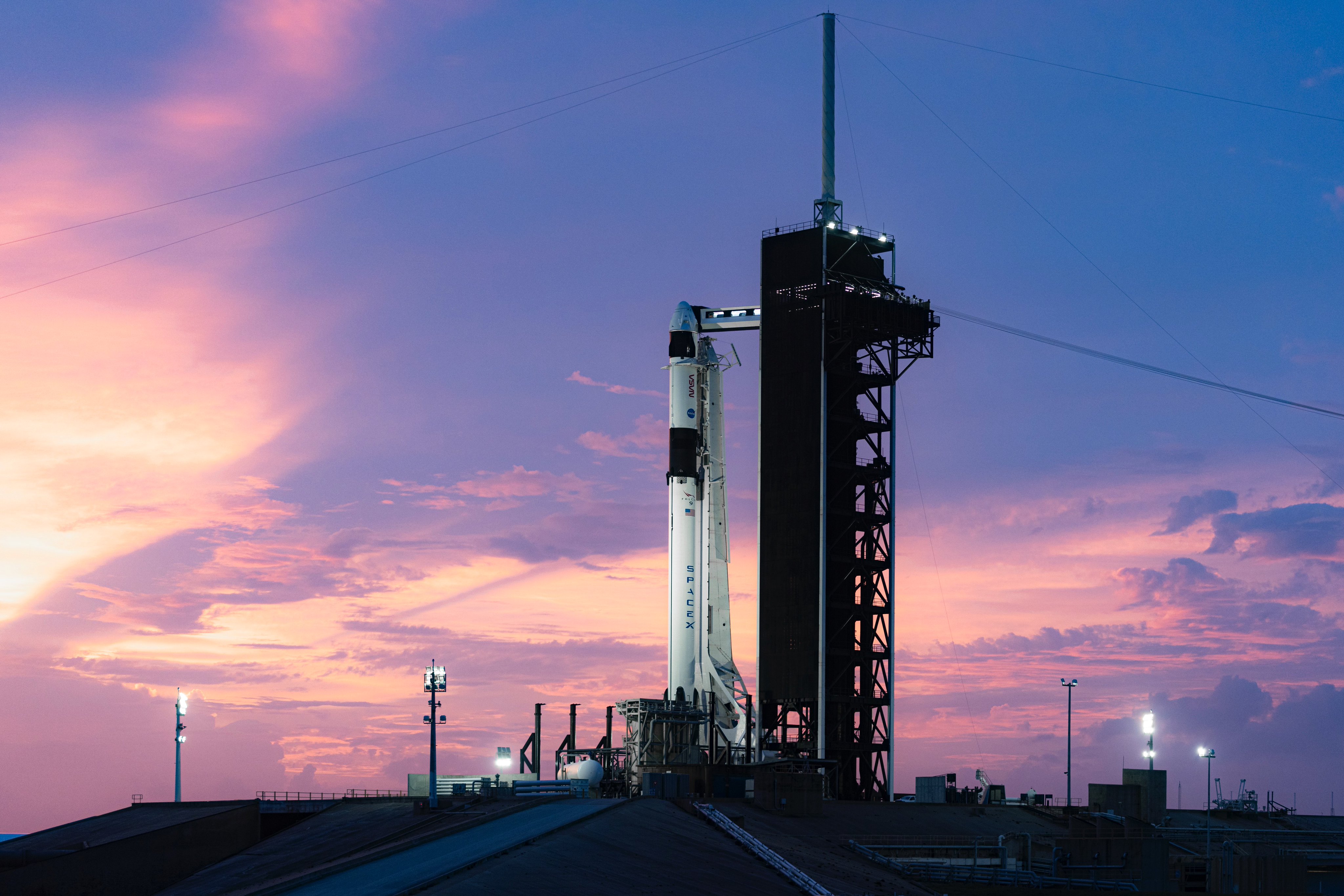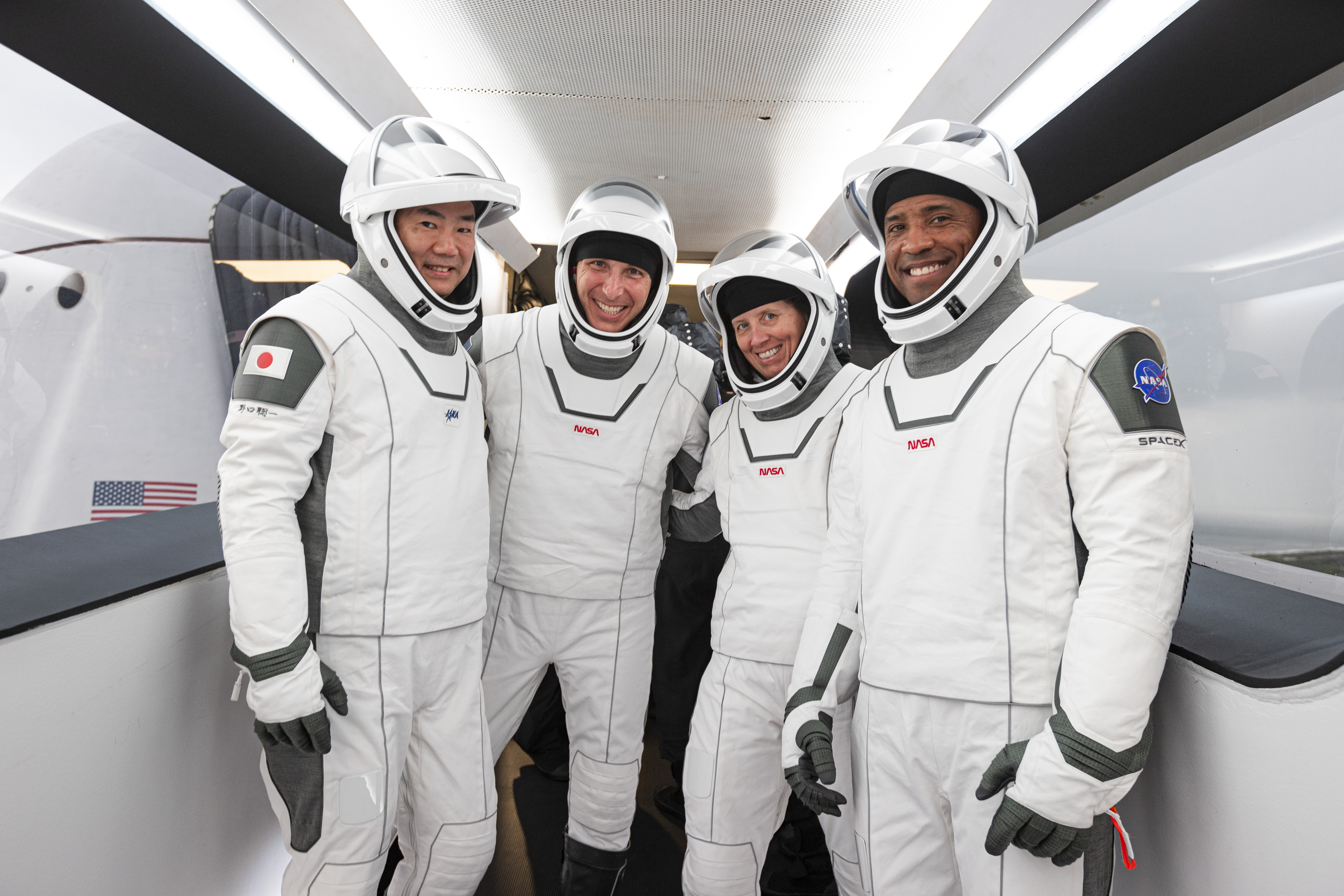NASA urges COVID caution for spectators of SpaceX Crew-1 astronaut launch

SpaceX is gearing up for its first operational astronaut launch from Florida this weekend, and NASA is once again asking spectators to take extra safety precautions to prevent the spread of COVID-19, the disease caused by the novel coronavirus.
Four astronauts are scheduled to launch to the International Space Station Saturday (Nov. 14) on a SpaceX Falcon 9 rocket, which is scheduled to lift off from NASA's Kennedy Space Center at 7:49 p.m. EST (0049 GMT on Nov. 15). Called Crew-1, it will be the first operational mission of SpaceX's Crew Dragon spacecraft and the second Dragon to launch with astronauts on board, following the Demo-2 test flight, which launched two spaceflyers to the space station in May and returned to Earth in August.
Before the Demo-2 mission, which launched about two months after the novel coronavirus pandemic shut down the nation and much of the world, NASA Administrator Jim Bridenstine told space fans not to travel to Kennedy Space Center to watch the launch, and to instead watch the live webcast from home to avoid spreading COVID-19. But the crowds showed up anyway; about 150,000 people gathered on Florida's Space Coast to watch the Demo-2 launch, which was the first astronaut launch to orbit from U.S. soil in nearly a decade.
Live updates: SpaceX's Crew-1 astronaut launch for NASA
Related: How to watch SpaceX launch the Crew-1 astronaut mission for NASA
Photos: Launch day crowds gather ahead of historic #spacexlaunch (📸 by @ShorttTimothy of Max Brewer Bridge in #Titusville) https://t.co/JzRaKtqIYB #LaunchAmerica #nasa #SpaceXCrewDragon #spacex #spacecoast #brevard pic.twitter.com/raH3JoTSyfMay 27, 2020
"I think we're expecting a large turnout," NASA's human spaceflight chief Kathy Lueders said in a news conference with reporters on Tuesday (Nov. 10), referring to the crowd size at this weekend's Crew-1 launch. Without explicitly telling spectators to stay at home, as Bridenstine did for Demo-2, Lueders urged the public to take precautions to curb the spread of the virus, like wearing a mask and practicing social distancing.
"We do want folks to celebrate with us. This is a big celebration," Lueders said, adding that "We'd be really sad if this was a superspreader event ... this would not be good for us."

The COVID-19 pandemic in Florida hasn't slowed down since Demo-2 launched on May 30. The state is currently reporting a seven-day average of more than 5,000 new cases per day.That's nearly seven times higher than it was on May 30, when the average was 757 new cases per day, according to The New York Times.
Breaking space news, the latest updates on rocket launches, skywatching events and more!
Emergency officials in Florida are predicting that up to 250,000 spectators will travel to the Space Coast to watch the launch on Saturday, Florida Today reported. Meanwhile, an additional 250,000 locals could be heading outside to watch it, Brevard County Communications Director Don Walker told Florida Today.
Lueders said that NASA is "being careful on site on how we're allowing people to come on and being careful about separation and numbers of folks that are coming on site" at Kennedy Space Center. But even those watching the launch outside the center, like on the beach, should follow the same guidelines for stopping the spread of COVID-19.
"Just like we're taking care of our crew members, we want you to take care of yourself and wear your masks and, you know, figure out how to get your six feet [of distance] on the beach, and come out and enjoy what I'm sure it's going to be a spectacular launch."
Email Hanneke Weitering at hweitering@space.com or follow her on Twitter @hannekescience. Follow us on Twitter @Spacedotcom and on Facebook.

Hanneke Weitering is a multimedia journalist in the Pacific Northwest reporting on the future of aviation at FutureFlight.aero and Aviation International News and was previously the Editor for Spaceflight and Astronomy news here at Space.com. As an editor with over 10 years of experience in science journalism she has previously written for Scholastic Classroom Magazines, MedPage Today and The Joint Institute for Computational Sciences at Oak Ridge National Laboratory. After studying physics at the University of Tennessee in her hometown of Knoxville, she earned her graduate degree in Science, Health and Environmental Reporting (SHERP) from New York University. Hanneke joined the Space.com team in 2016 as a staff writer and producer, covering topics including spaceflight and astronomy. She currently lives in Seattle, home of the Space Needle, with her cat and two snakes. In her spare time, Hanneke enjoys exploring the Rocky Mountains, basking in nature and looking for dark skies to gaze at the cosmos.
